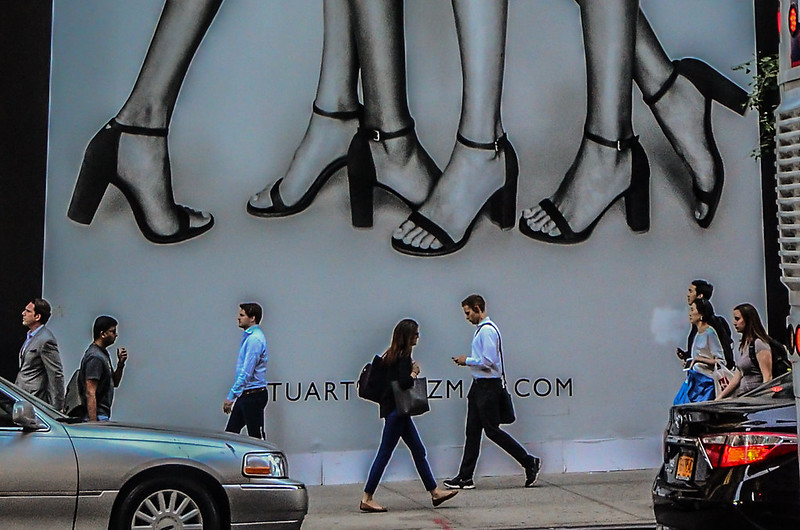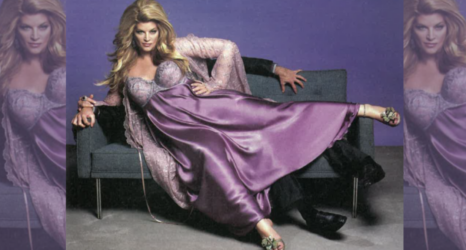
A year ago I decided to drive across the street from my office for lunch. I wanted to avoid the catcalls I’d endured the last time I had crossed this particular street, when a middle-aged man yelled from his red Chevy truck, “Ride my cock, baby!” I wondered what it would be like not to feel like a sexual object on display. But I also wondered whether I’d rather be the woman who gets whistled at or the one who doesn’t.
As a psychotherapist, I meet hundreds of women who struggle with their body image or sexuality. These struggles show up as depression, anxiety, eating disorders, body dysmorphic disorders, obsessive-compulsive disorders, reproductive concerns, parenting issues or relationship crises. I’ve also encountered increasing numbers of men dealing with relationship issues and loneliness.
And I know firsthand the discomfort of embodying what many people see as unattractive. As a Middle Eastern American, I don’t fit the Eurocentric model of beauty. When I was a young girl, I drew pictures only of blonde, blue-eyed princesses, perhaps in response to my blonde stepsister telling me that my “skin was the color of poop.” No matter how much I tried to dress myself up, I was still not white.
Now that I understand how common body-image struggles are, I’ve begun to wonder who is really sick—my clients or our culture?
So, I spent the last year documenting pieces of the world around me, gathering evidence of a toxic cultural milieu. On my drive to work one day, this is what I saw:
We are bombarded with hypersexualized images of females, so much so that most of us don’t even notice them. They are all around us like the air we breathe; messages so blatant, they become invisible, encouraging the normalization of female objectification.
With the rise of electronic technology and social media, the quantity and quality of these images have intensified. The Internet pornography industry generates $13 billion per year in the United States alone ($100 billion worldwide)––bigger business than professional football, basketball and baseball combined.
Researchers reviewed over 1,000 Rolling Stone cover images published over four decades and found that 11 percent of men and 44 percent of women appeared in sexualized images in the 1960s, compared to 17 percent of men and 83 percent of women in the 2000s.
There is also the rise of the “breastaurant,” chain establishments featuring young, attractive servers in revealing uniforms. According to an article written in 2015 by journalist Jillian Berman, “Sales at the Tilted Kilt, Twin Peaks and Brick House…have grown at a double-digit pace over the last year.”
Younger people are also increasingly exposed to sexual imagery. In a 2010 U.K. study, one third of 14 to 16 year olds reported they had first seen sexual images online when they were 10 or younger.
I came across these ads in various women’s magazines and in Business Insider, in several medical office waiting rooms, including a pediatrician’s office:
According to social learning theory, audiences are more likely to be persuaded to buy a product if the advertising narrative is easily recognizable and frequently repeated. But if these ads represent what is easily recognizable and “normal,” what does that say about the health of our society? And how does all this really affect us?
Everyone suffers from this constant emphasis on appearance as it encourages people to separate the body from the individual as a person. All women are affected, regardless of whether they fit conventional standards of beauty, and whether images depict women as active or passive. In any case, the body becomes an object that exists for sexual pleasure, leading to self-objectification. Self-objectification, in turn, is connected to eating disorders, depression and sexual dysfunction. Researchers have found a link between male partners’ pornography use and women’s lower self esteem, higher negative affect and relationship anxiety.
Dozens of studies, such as this one, have also linked pornography use to sexual violence. Constant exposure to scenes displaying women as sex objects may encourage males to believe that they have a right to coerce women into sexual acts.
But men also suffer emotionally and physically from hypersexualized images, as they, too are portrayed as less than human. Psychology researchers Linda Muusses and colleagues showed that husbands who frequently used pornography experienced more marital adjustment problems and poorer relationship quality. Men are also experiencing erectile dysfunction as early as 20, possibly resulting from desensitization to sexual imagery.
Many men are starving for real human connection, but are only being taught to satiate their hunger in empty and unfulfilling ways.
Is there hope for our society? I believe there is.
The first step is to increase awareness. We must be brave enough to see what’s right in front of us and to question practices deemed normal and acceptable. We can see efforts in this direction, such as the Dove Campaign for Real Beauty, which shows realistic body types in ads and sponsors projects to improve women’s self-esteem; Dear Kate, a women’s underwear company that rejects idealized models and airbrushing; and the Always LikeaGirl campaign, promoting female empowerment. While these are still companies selling products, they have at least begun to offer more empowered—and non-sexualized—images of women.
These media pioneers are the exception to the rule, but I hope that one day in my lifetime the rule will change.
New research is promising. This recent study found that people more favorably evaluated brands that avoided sexualized ads compared to those that used them. Perhaps treating people with dignity and respect can sell products. Perhaps what we all want is a culture where we can feel safe and authentic––where we all prefer to walk, not drive, across the street.
Photo courtesy of Thomas Dwyer on Flickr, licensed under Creative Commons 2.0





